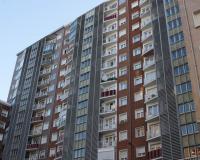
1. Hechos.
La compañía Grüne Welle Wetriebs es titular de una licencia exclusiva para Alemania relativa al modelo comunitario núm. 0008770030-0001. La licencia, sin embargo, no se encuentra inscrita en el Registro de dibujos y modelos comunitarios.
Tras recabar el consentimiento del titular del modelo comunitario, tal y como establece el artículo 32.3 del Reglamento (CE) 6/2002, Grüne Welle Wetriebs ejercitó una acción por infracción frente a la compañía Thomas Phillips por distribuir un producto presuntamente infractor del referido modelo.
El órgano de primera instancia declaró responsable a Thomas Phillips y estimó que la actora habría demostrado estar facultada para ejercitar en su propio nombre la acción. Pero la sentencia fue recurrida por la demandada ante el Oberlandesgericht Düsseldorf (tribunal alemán de apelación) por considerar que Grüne Welle Wetriebs carecía de legitimación activa para ejercitar las acciones.
En estas circunstancias, el tribunal alemán decide suspender el procedimiento y plantea al TJ las dos siguientes cuestiones prejudiciales:
1) ¿Puede un licenciatario no inscrito ejercitar acciones por infracción de los derechos sobre un diseño comunitario registrado?
2) De ser así, ¿puede el licenciatario exclusivo además ejercitar una acción indemnizatoria por los daños y perjuicios sufridos o solamente puede participar en un procedimiento iniciado por el propio titular?
2. Pronunciamientos.
Con respecto a la primera de las cuestiones, una interpretación literal del artículo 33, apartado 2, del Reglamento 6/2002 podría llevar a pensar que una licencia no inscrita no permite hacer valer los derechos frente a terceros pues la primera frase de dicho apartado establece que “los actos jurídicos indicados en los artículos 28, 29 y 32 [sobre cesiones, derechos reales y concesión de licencias] sólo surtirán efectos frente a terceros en todos los Estados miembros tras la inscripción en el Registro”. Sin embargo, el Tribunal nos recuerda que las normas deben interpretarse no sólo teniendo en cuenta su tenor literal, sino también de acuerdo a su contexto y los objetivos que persigue.
Así las cosas, el Tribunal llama la atención al hecho de que tanto el propio apartado 2 del artículo 33 como también el apartado 3 del artículo 33 se refieren expresamente a los terceros que hubieran adquirido derechos, lo que le lleva a pensar que, desde un punto de vista contextual, la norma está pensada para regular los efectos que produce el registro frente a terceros que hubieran adquirido derechos después y no, en cambio, aquellos otros casos en los que el tercero sea simplemente un infractor.
En conclusión, la respuesta a la primera cuestión es que, efectivamente, un licenciatario puede ejercitar acciones por infracción de los derechos sobre el diseño comunitario registrado objeto de la licencia aunque dicha licencia no haya sido inscrita en el Registro.
Con respecto a la segunda de las cuestiones, la duda sobre si pudiendo el licenciatario no inscrito iniciar acciones por infracción podría además ejercitar una acción indemnizatoria surge del tenor del artículo 32, apartado 4, el cual establece que, a fin de obtener una indemnización por los daños y perjuicios sufridos, el licenciatario estará facultado para participar en la acción por infracción interpuesta por el titular del diseño comunitario, sin precisar si puede reclamar el resarcimiento cuando sea él mismo quien ejercita la acción.
De nuevo, el Tribunal recurre al contexto y señala que habiendo supuestos en los que el Reglamento contempla que el licenciatario exclusivo pueda ejercitar por sí mismo una acción por infracción (con consentimiento del titular y cuando el titular no haya actuado dentro de un plazo razonable pese a habérselo instado a hacer), no tendría ningún sentido que en cambio no pudiera solicitar el resarcimiento de los daños y perjuicios sin adherirse a una acción interpuesta por el titular. Esa interpretación restrictiva sería además, según apunta la sentencia, contraria al objetivo de la norma, el cual consiste en dotar al licenciatario de vías procesales para actuar contra la infracción y defender así sus derechos.
En definitiva, la conclusión a la que llega el Tribunal en relación con la segunda cuestión es que el licenciatario, una vez legitimado para ejercitar la acción por infracción, puede asimismo reclamar por sí el resarcimiento de los daños y perjuicios sufridos.
3. Comentario.
De este modo, como ya hiciera con la marca comunitaria (asunto C-163/15), el TJ se posiciona nuevamente a favor de que los licenciatarios también puedan demandar aunque no hayan inscrito su licencia en el Registro.
Esta sentencia, además, se sitúa en línea con la interpretación que en su día realizó el Juzgado de lo Mercantil de Alicante, en cuya sentencia de 26 de diciembre de 2011 (ECLI:ES:JMA:2011:152) señaló que el artículo 33 del Reglamento estaba tan sólo dedicado a regular la posición jurídica del licenciatario frente a terceros subadquirientes del licenciante titular de la marca.
(Fuente de la información: ANUARIO ELZABURU 2016, recopilatorio de comentarios de jurisprudencia europea en materia de Derecho de Propiedad Industrial e Intelectual que realiza Elzaburu).
Documento citado:
- Reglamento (CE) Nº 6/2002 del Consejo de 12 de diciembre de 2001 sobre los dibujos y modelos comunitarios.
- Sentencia del Tribunal de Justicia (Sala Séptima) de 4 de febrero de 2016.
ENGLISH VERSION
Right of the licensee of a Community design to bring proceedings for infringement without having registered the licence. Judgment of the Court of Justice of 22 June 2016, Thomas Philipps (C-419/15).
1. Background.
Grüne Welle Wetriebs is the holder of an exclusive licence for Germany for Community design no. 0008770030-0001. The licence has nevertheless not been entered on the register of Community designs.
After obtaining the Community design holder’s consent, as established in Article 32.3 of Regulation (EC) 6/2002, Grüne Welle Wetriebs brought proceedings for infringement against the company Thomas Phillips for distributing a product that allegedly infringed the design in question.
The first instance court held Thomas Phillips liable and found that the plaintiff had demonstrated that it was entitled to bring the action in its own name. However, the judgment was appealed by the defendant in the Oberlandesgericht Düsseldorf (the German court of appeal) on the grounds that Grüne Welle Wetriebs did not have standing to bring the claims.
In those circumstances, the German court decided to stay the proceedings and refer the following two questions to the ECJ for a preliminary ruling:
1) May a licensee who has not been entered in the register of Community designs bring claims for infringement of rights in a registered Community design?
2) If so, may the exclusive licensee also bring an action claiming damages on its own, or may it only intervene in an action brought by the rightholder itself?
2. Findings.
With respect to the first question, a literal interpretation of Article 33.2 of Regulation 6/2002 could lead one to think that an unrecorded licensee cannot enforce the rights in the design against a third party, since the first sentence of that provision states that “legal acts referred to in Articles 28, 29 and 32 [concerning transfers, rights in rem and licensing] shall only have effect vis-à-vis third parties in all the Member States after entry in the register”. The court nevertheless reminds us that legal provisions must be interpreted not just in light of their wording but also in light of the context in which they occur and the objectives that they pursue.
In that regard, the court notes that subparagraphs 2 and 3 of Article 33 make specific reference to third parties who have acquired rights, which thus infers, in the contextual framework, that the rule is intended to regulate the effects of entry in the register vis-à-vis third parties who may have acquired rights subsequently and does not apply to other cases where the third party is simply an infringer.
Thus, the answer to the first question is that the licensee may indeed bring proceedings for infringement of rights in a licensed registered Community design even though the licence has not been entered in the register.
With regard to the second question, the uncertainty as to whether an unrecorded licensee, although able to bring infringement actions on its own account, may also claim damages arises from the wording of Article 32.4. That provision establishes that, for the purpose of obtaining compensation for damage suffered by it, the licensee shall be entitled to intervene in an infringement action brought by the rightholder in a Community design. However, nothing is said with regard to the question of whether the licensee has a right to claim damages if it brings that action itself.
Once again, the court looks at the context and observes that, since there are circumstances in which an exclusive licensee is permitted, under the Regulation, to bring proceedings for infringement on its own account (with the rightholder’s consent and where the latter has failed to take action itself within an appropriate period despite having been asked to do so), it would make no sense if the licensee could nonetheless only claim damages by intervening in an action brought by the rightholder. The court adds that such a restrictive interpretation would be contrary to the objective of the provision, which is to provide the licensee with the means to take action against the infringement and thus defend its rights.
Basically, the conclusion reached by the court in relation to the second question is that the licensee, once entitled to bring proceedings for infringement, may also claim damages on its own account.
3. Remarks.
By this judgment, which echoes previous findings in respect of EU trademarks (case C-163/15), the ECJ has once again taken the view that licensees have standing to sue even though their licenses have not been entered in the register.
This ruling is furthermore in line with the interpretation provided by Alicante Mercantile Court in its judgment of 26 December 2011 (ECLI:ES:JMA:2011:152), in which it held that Article 33 of the Regulation was only aimed at regulating the legal position of the licensee with respect to third parties who may in turn acquire rights from the licensor and owner of the trademark.
ElDerecho.com no comparte necesariamente ni se responsabiliza de las opiniones expresadas por los autores o colaboradores de esta publicación








